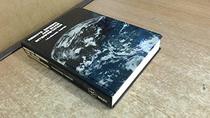Search -
Remote Sensing and Image Interpretation
Remote Sensing and Image Interpretation
Author:
The image to the right shows a volcanic landscape in central Africa, including parts of Rwanda, Uganda, and the Democratic Republic of the Congo (formerly Zaire). This image was obtained from the SIR-C multi-wavelength radar remote sensing system, operated on the space shuttle Endeavor in 1994. SIR-C monitors the earth's surface using wave-lengt... more »
Author:
The image to the right shows a volcanic landscape in central Africa, including parts of Rwanda, Uganda, and the Democratic Republic of the Congo (formerly Zaire). This image was obtained from the SIR-C multi-wavelength radar remote sensing system, operated on the space shuttle Endeavor in 1994. SIR-C monitors the earth's surface using wave-lengt... more »
ISBN-13: 9780471026099
ISBN-10: 0471026093
Publication Date: 9/1979
Pages: 624
Rating: ?
ISBN-10: 0471026093
Publication Date: 9/1979
Pages: 624
Rating: ?
0 stars, based on 0 rating
Publisher: John Wiley & Sons Inc
Book Type: Hardcover
Other Versions: Paperback
Members Wishing: 0
Reviews: Amazon | Write a Review
Book Type: Hardcover
Other Versions: Paperback
Members Wishing: 0
Reviews: Amazon | Write a Review
Genres:
- Science & Math >> Physics >> Applied
- Science & Math >> Technology >> General & Reference
- General
- Computer Technology >> Imaging Systems
- Electrical & Optical >> Optics >> General




